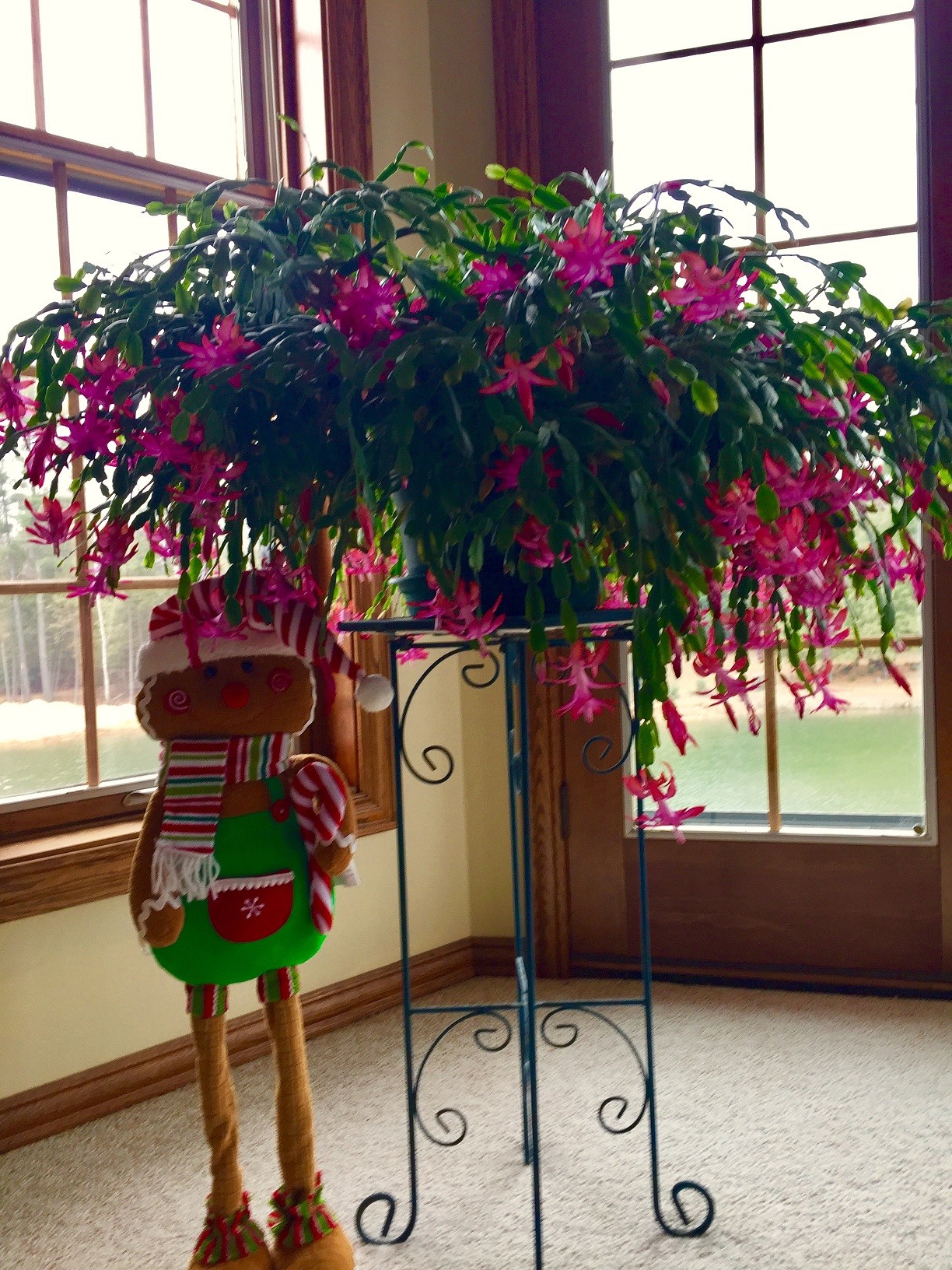Christmas cacti, with their vibrant and unique blooms appearing during the festive season, are more than just houseplants; they can become cherished heirlooms passed down through generations. Like the remarkable 125-year-old cactus thriving in a sunlit window, these plants can be surprisingly long-lived with the right care. Understanding How Do I Take Care Of Christmas Cactus is key to enjoying their beauty year after year.
 A blooming pink Christmas cactus in a pot, placed near a window with natural sunlight, showcasing its vibrant flowers and healthy green foliage.
A blooming pink Christmas cactus in a pot, placed near a window with natural sunlight, showcasing its vibrant flowers and healthy green foliage.
These tropical cacti, also known as holiday cacti or Schlumbergera, are not desert dwellers like their spiky cousins. Originating from the rainforests of Brazil, they require a different approach to care to flourish in your home. Providing the right conditions will not only ensure vibrant blooms but also contribute to the longevity of these fascinating plants.
To properly care for your Christmas cactus, consider these essential factors:
Light: Christmas cacti thrive in bright, indirect sunlight. A location near an east or south-facing window is ideal, but avoid direct sun exposure, especially during the hottest part of the day, as it can scorch the leaves. Too little light, however, can result in weak growth and a lack of blooms. Observe your cactus; if the leaves appear pale or reddish, it might be getting too much direct sun. If the growth is leggy and sparse, it may need more light.
Temperature: Maintaining the right temperature is crucial, particularly for encouraging blooming. During the active growing season and while buds are developing, aim for daytime temperatures between 65-75°F (18-24°C). Slightly cooler nighttime temperatures, around 55-65°F (13-18°C), are beneficial for bud formation. Avoid placing your cactus near drafts or heat sources, as sudden temperature fluctuations can stress the plant and cause bud drop.
Watering: Proper watering is a delicate balance. Christmas cacti are susceptible to both overwatering and underwatering. The key is to allow the top inch of soil to dry out between waterings. When watering, thoroughly saturate the soil until water drains from the drainage holes. Then, allow the soil to dry slightly before watering again. Overwatering is a more common problem and can lead to root rot, indicated by mushy stems or drooping leaves. Underwatering will cause the pads to shrivel and become limp. During the fall and winter months, when the plant is preparing to bloom or is in bloom, slightly reduce watering but never let the soil completely dry out.
Humidity: As rainforest natives, Christmas cacti appreciate higher humidity levels than typical household air, especially during winter when indoor air tends to be dry. You can increase humidity by placing the pot on a tray filled with pebbles and water, ensuring the bottom of the pot is above the water line. Misting the plant lightly with water a couple of times a week can also be beneficial. Grouping your Christmas cactus with other houseplants can also create a more humid microclimate.
Fertilizing: Regular fertilization during the active growing season, from spring to late summer, will support healthy growth and abundant blooms. Use a balanced liquid fertilizer diluted to half strength every 2-4 weeks. Stop fertilizing about a month before you expect buds to appear, typically around October, as over-fertilizing during bud formation can hinder blooming.
Encouraging Blooms: Getting your Christmas cactus to bloom requires mimicking its natural environment and providing a period of dormancy. In addition to cooler nighttime temperatures and reduced watering in the fall, a period of shorter day length is also crucial for bud initiation. Starting in late September or early October, provide your cactus with 12-14 hours of darkness each day. You can achieve this by placing it in a room that is not used at night or by covering it with a dark cloth or box for the required hours. Continue this dark period for about 6-8 weeks, or until buds appear.
Repotting: Christmas cacti prefer to be slightly pot-bound and do not need frequent repotting. Repotting every 2-3 years, or when the plant becomes root-bound, is generally sufficient. The best time to repot is after the blooming period, in late winter or early spring. Use a well-draining potting mix formulated for cacti or succulents, or create your own mix with equal parts potting soil, perlite, and peat moss. Choose a pot that is only slightly larger than the previous one and ensure it has drainage holes.
Common Issues: Bud drop is a frustrating issue that can occur with Christmas cacti. It is often caused by stress from sudden changes in temperature, light, watering, or humidity, especially during bud formation. Overwatering and underwatering can also lead to bud drop. Pests are not usually a major problem, but mealybugs or spider mites can occasionally infest Christmas cacti. Inspect your plant regularly and treat any infestations promptly with insecticidal soap or neem oil.
By understanding how do i take care of christmas cactus and following these guidelines, you can cultivate a thriving plant that graces your home with beautiful blooms each holiday season, perhaps even creating your own living heirloom to be enjoyed for generations to come.
